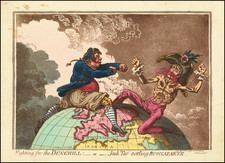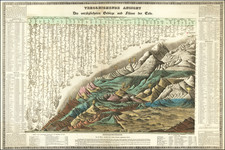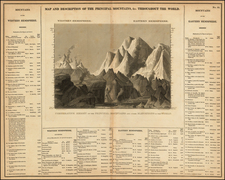De Windverkopers of Windvangers, die door wind, verliezen Geld en Goed; bederven Vrouw en Kind, anonymously published in Amsterdam in 1720, is an insightful broadside pertaining to the South Sea Bubble and the tumultuous world of speculation. Published within the Mirror of Folly, the sheet prominently features an etching that depicts the bustling courtyard of the Old Exchange in Amsterdam. At its core is a placard detailing 21 distinct investment schemes, surrounded by stockbrokers and eager investors immersed in the exchange of documents within the encompassing colonnades.
The early 18th century was a tumultuous time in finance and commerce, particularly marked by speculative bubbles that rocked the European markets. The South Sea Bubble, one of the most infamous financial disasters, saw an unsustainable surge in stock prices, only to culminate in a catastrophic collapse in 1720. This broadside, emanating from the financial heart of Amsterdam, provides a vivid representation of the frenetic activity and rampant speculation of this period. The atmosphere at the Old Exchange, brimming with investors engrossed in a plethora of investment ventures, captures the essence of the speculative fever that was sweeping across Europe.
The etching itself, rich in detail, offers an intricate portrayal of the period's financial milieu. The central placard enumerating the various investment schemes stands as a testament to the sheer diversity and volume of speculative opportunities that beckoned investors. Furthermore, the surrounding scenes of stockbrokers and investors animatedly exchanging documents evoke the sheer pace and urgency with which these transactions were conducted. The inclusion of engraved title, inscriptions, and accompanying verses in three columns enhances the depth and context of the broadside, offering insights into the prevailing sentiments and commentaries of the era.
In essence, De Windverkopers of Windvangers serves as a pivotal visual and textual record of a defining moment in financial history. The broadside, steeped in the details and drama of the South Sea Bubble, offers scholars and enthusiasts alike an unparalleled window into the intricacies and excesses of early 18th-century speculative markets in Amsterdam.










![[Autographs of British Admirals During the American Revolution & War of 1812]](https://storage.googleapis.com/raremaps/img/small/69274.jpg)
![Drink Norden Kaffe [Germany]](https://storage.googleapis.com/raremaps/img/small/91604.jpg)


![(Mapseller Correspondence) [Rufus Blanchard Letter written to Charles Marseilles] (May 23, 1888)](https://storage.googleapis.com/raremaps/img/small/86063.jpg)